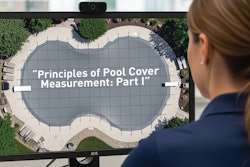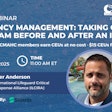It’s no secret the pool and spa industry has long had a problematic relationship with safety issues. On one hand, professionals and organizations consistently demonstrate their commitment to safety, especially drowning prevention, by way of their rhetoric, promotion of layers of protection and often by donating to organizations such as the National Drowning Prevention Association and others. On the other hand, there’s often an aversion to talking about safety with consumers.
It’s understandable. Humans are usually creatures that follow paths of least resistance and it’s much easier to talk about all the exciting aspects of the aquatic and outdoor lifestyle, to sing the familiar refrains about family togetherness, fun and all the wonderful health benefits, than it is to invoke the risks and fears we all share. And no one wants to douse consumer enthusiasm for pools and spas, products that improve the health and lives of all who use them.
Still, every year, particularly in the month of May, National Drowning Prevention Month, we come face-to-face with the issue as people head back to the water. While I profoundly support this annual effort and official observance, I think we should look beyond the immediacy of the beginning of the season and embrace safety in a way that is more part of our industry’s DNA and do so in a way that empowers consumers rather than aggravates their reluctance and fear.
It’s in our nature to fear what we can’t control, and there’s no question owning a recreational body of water presents risks, but when risks are met with viable solutions that are readily deployed as we’ve seen in other industries – seat belts, smoke detectors and motorcycle helmets immediately come to mind – then the fear and anxiety diminish because we have the means to control the issue and reduce the risk. The anxiety of driving with small children is greatly reduced by child safety seats because we know that they are far safer in those cumbersome devices. Nowadays, parents use safety seats without a second thought; they don’t consider the hassle, the expense or even if the child likes it or not. Safety measures in and around water should work the same way.
Ultimately, safety measures not only reduce fear, but they save lives. In other words, we have everything to gain by not shrinking from safety, but instead thoughtfully embracing it. That’s why I think each and every person in our industry should become an emissary for safety, in May and year ‘round. We know that many consumers have concerns, even fears, and the only way to overcome those emotions is with the force of information. People who own pools, spas, hot tubs and ponds should always be equipped with the know-how and means to create safe environments in their home.
That begins with the understanding that aquatic safety is an all-encompassing issue, a habit of empowerment through practical solutions. Yes, fences might be part of the formula for many homeowners, but that’s also true for safety covers, self-latching gates, pool alarms and other physical barriers. Our consumers should also know that while swim lessons don’t make kids drown-proof, knowing how to swim significantly reduces the risks.
More than anything, we must promote the concept that supervision is the No.1 safety measure. Of course, we all hear that it’s not realistic for people to know where their kids are 100 percent of the time, but that doesn’t mean awareness is ineffective. When combined with other means of protection, supervision is a powerful first-line defense.
One of my favorite safety measures is the practice of assigning lifeguard duties to a capable adult during parties where kids are playing in and around a pool. We know that during outdoor gatherings it’s easy to assume someone else is watching the kids, but too often that turns out not to be the case and incidents almost uncannily occur when there are lots of people on the scene.
I believe we should encourage homeowners to assign responsibility for supervision during parties, maybe have a lanyard or lifeguard cap that is worn by the person in charge of watching the kids in the pool. I’ve been at parties where that duty is handed off between adults so that there’s always a fresh set of eyes on the activity. I’ve even been at events where the hosts hire a lifeguard to preside over the fun. It’s a great way for a water-savvy teen or a young adult to earn a few extra dollars for an afternoon watching kids, all the while everyone can rest at ease knowing there’s someone there to respond if someone has a problem in the water.
That’s just one small example of the kind of forethought and care we should all be promoting as part of our industry culture. As the sun sets on another National Drowning Prevention Month, there’s no better time to redouble our efforts and maybe even rethink the way we work together to make the water safe.










































